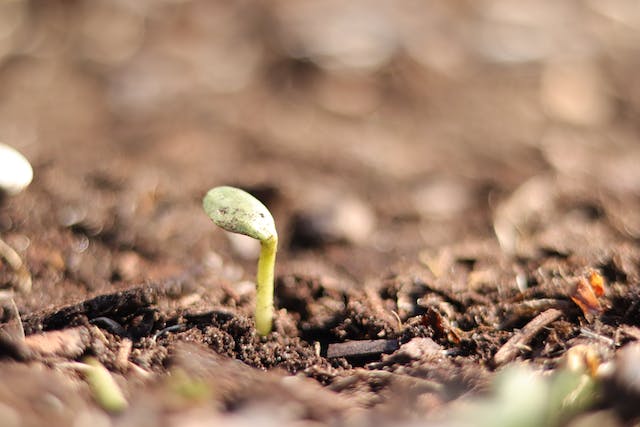Spring is coming. It may seem like it’s taking a long time to get here, but it is coming.
What this means is that it is about time to start thinking about starting seedlings.
If you’ve been gardening for long, it seems that starting seedlings is a no brainer. However, you may find that starting seedlings isn’t for you. Some people believe they have a black thumb…some people have never tried…and some people are just intimidated! Whatever the case, this post will set you straight.
Starting Seedlings
1. Seeds
The first thing that you are going to need to do when starting seedlings is to get your hands on some seeds. Many homesteaders will recommend that you use organic, heirloom seeds. A post published not too long ago on our post will help you know what to look for to purchase the best seeds to fit your needs.
2. Supplies
Next, you’ll want to gather your supplies. This is also pretty simple to do. You’ll need:
- Pots (most homesteaders like to use 4-inch pots)
- Seed Starting Mix (You can make own but you can also buy something like this)
- 5 Gallon Bucket
- Water
- Plastic Wrap
3. Wet Soil & Prepare Pots
Fill your 5-gallon bucket with seed starting mix and get it soaking wet. Get it so wet that it can’t absorb the water anymore and when you squeeze the soil in your hand it wrings out like a really wet sponge.
Fill each 4-inch pot (or whatever size container you’re using) almost to the top with soil. (Water will most likely run out the bottom because of the wetness of the soil, be sure to be prepared for this.)
4. Plant the Seeds
Now you’re ready to plant your seeds. Depending on the size of the seed and its individual needs, there will be different planting instructions. Don’t stress about this too much. Generally, plant most seeds about 1/2-1 inch deep. But to be sure, read your package.
5. Cover Pots with Plastic Wrap and Place it in a Warm Spot
It is really important that the seeds stay in damp soil the entire time that they are germinating or trying to germinate. To facilitate this, keep each of the 4-inch pots covered with plastic wrap until the first signs of germination. (It is important to take the plastic wrap off IMMEDIATELY at first signs of germination.)
It is also important that your soil temperature is at the appropriate level for germination. Most seeds germinate between 70-80 degrees. Take a look at this helpful chart on seed germination soil temperatures.
6. Germination and Light
Once your seeds are germinated, get them into the sun or turn on your starting seeds with grow lights – Jump Start 4′ T5 Grow Light System.
And there you have it! That’s pretty much all there is to start seeds at home.
Are you already on the right path for starting seedlings for spring? What are you planning to grow this year?
As an aside, if you’re serious about gardening, especially organic gardening, I highly recommend anything by Eliot Coleman.
Want even more information on starting seedlings?
Check out this great post from The Prairie Homestead on repurposed seed starting pots.
You can also start seeds in eggshells which is a good and economical idea.

